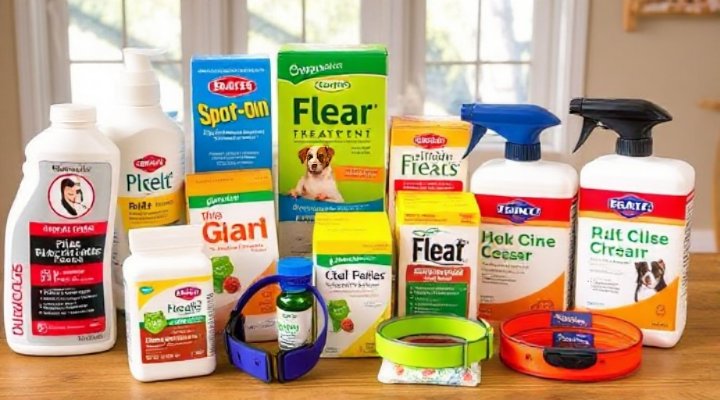Flea treatment for dogs is more than just a cosmetic concern – it’s a vital part of your pet’s health regimen. These tiny pests can cause serious discomfort and even lead to health complications if left untreated. In this guide, we’ll explore everything you need to know to keep your furry companion flea-free and happy.

Understanding Fleas and Their Impact on Dogs
Before we dive into flea treatment options, it’s important to understand what we’re dealing with. Fleas are small, wingless insects that survive by feeding on animal blood. A single flea can bite your dog up to 400 times a day, causing intense itching and discomfort. Moreover, some dogs develop flea allergy dermatitis, an allergic reaction to flea saliva that can lead to severe skin irritation.
Fleas can also transmit tapeworms and, in severe infestations, cause anemia – especially in puppies or small breeds. That’s why regular flea treatment for dogs isn’t just about comfort; it’s about preventing serious health issues.
Types of Flea Treatments for Dogs
When it comes to flea treatment for dogs, you have several effective options to choose from. Each has its advantages, and the best choice depends on your dog’s specific needs and lifestyle.

Topical Treatments
Topical treatments, also known as spot-on treatments, are applied directly to your dog’s skin, usually between the shoulder blades. These products spread across the skin’s surface and provide protection for about a month. They’re popular because they’re easy to use and highly effective when applied correctly.
Oral Medications
Oral flea treatments come in chewable tablets or flavored pills that your dog can take like a treat. These medications work systemically, meaning they circulate in your dog’s bloodstream. When fleas bite, they ingest the medication and die. Some oral treatments provide protection for just 24 hours, while others last up to three months.
Flea Collars
Modern flea collars have come a long way from the smelly, ineffective versions of the past. Today’s high-quality flea collars can provide protection for up to 8 months by slowly releasing active ingredients that spread across your dog’s skin and coat.

Natural Flea Treatment Options
For pet owners who prefer natural solutions, there are several options for flea treatment for dogs. While these may not be as immediately effective as chemical treatments, they can be excellent for prevention or as part of an integrated approach.
Essential oils like lavender, peppermint, and cedarwood can help repel fleas when used properly. However, it’s crucial to dilute them correctly and never apply directly to your dog’s skin without proper guidance. Another natural approach is diatomaceous earth, a fine powder that can be sprinkled on your dog’s bedding and around your home.
Preventing Flea Infestations
The best flea treatment for dogs is prevention. Here are some key strategies to keep fleas at bay:
- Regular grooming with a flea comb
- Washing your dog’s bedding frequently in hot water
- Vacuuming your home regularly, especially areas where your dog spends time
- Maintaining your yard by keeping grass short and removing debris
- Using preventive flea treatment for dogs year-round, even in colder months
Remember, fleas can survive in your home environment for months, so treating your dog alone isn’t enough – you need to address your home and yard as well.

When to Consult Your Veterinarian
While many flea treatments for dogs are available over-the-counter, it’s always best to consult with your veterinarian before starting any new treatment. This is especially important if your dog has existing health conditions, is pregnant, or is very young or old. Your vet can recommend the safest and most effective products for your specific situation.
If you notice signs of flea-related illness like pale gums, lethargy, or severe skin irritation, seek veterinary care immediately. These could be signs of anemia or secondary infections that require professional treatment.
Related Articles
For more information on keeping your dog healthy, check out our articles on best dog food brands and dog training techniques. You might also find valuable information on the AVMA website about flea and tick prevention.
Remember, a comprehensive approach to flea treatment for dogs includes both treating current infestations and preventing future ones. With the right knowledge and products, you can keep your furry friend comfortable and flea-free all year round.

